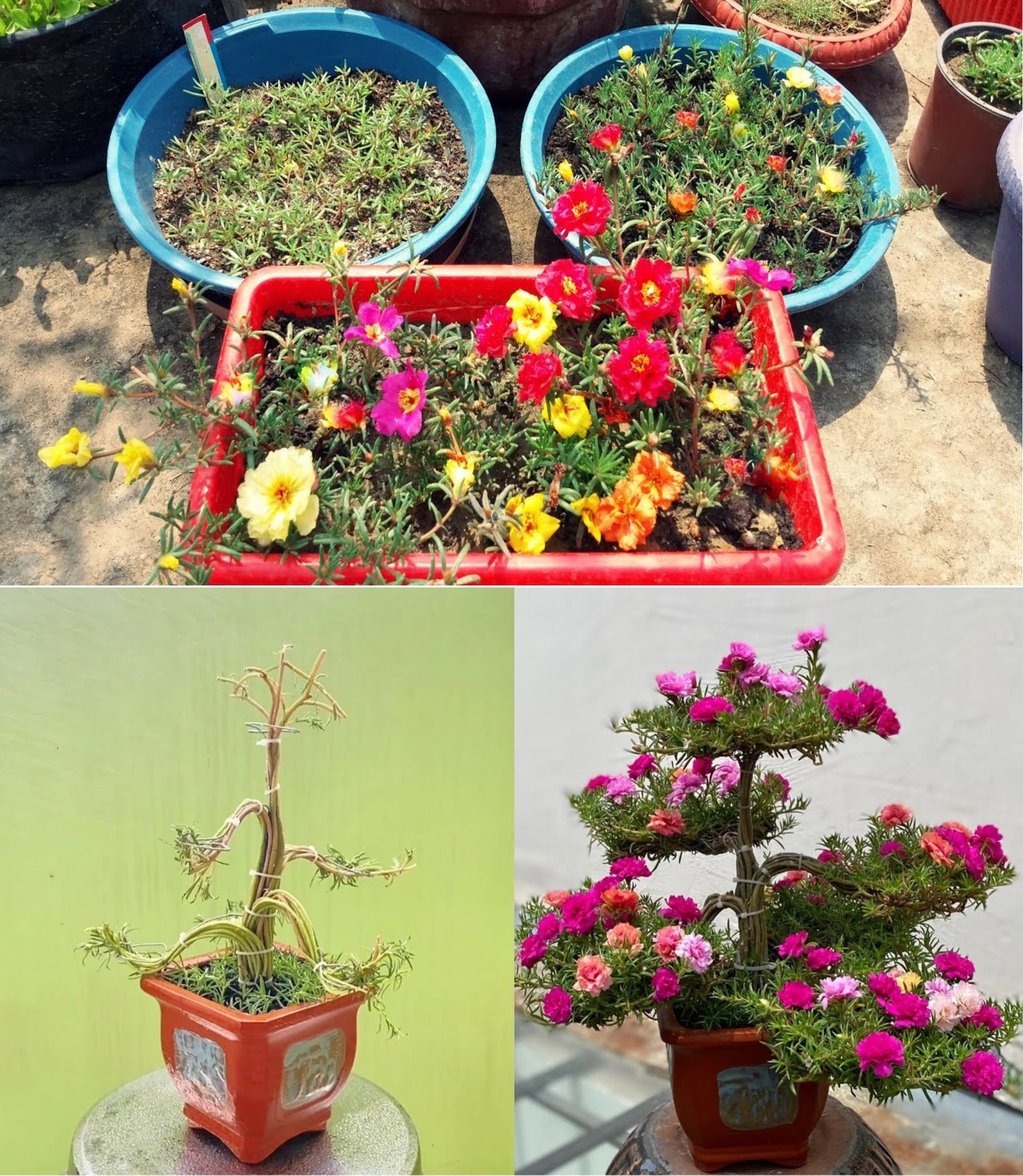
Portulaca, commonly known as moss rose or sun rose, is a popular annual flowering plant known for its vibrant, colorful blooms and its ability to thrive in hot, dry conditions. Here’s everything you need to know about growing and caring for Portulaca flowers:
General Information
- Botanical Name: Portulaca grandiflora
- Common Names: Moss rose, sun rose, eleven o’clock, purslane
- Family: Portulacaceae
- Origin: South America
Characteristics
- Growth Habit: Low-growing, spreading plant that forms a dense mat.
- Height: Typically 6-8 inches (15-20 cm).
- Spread: Up to 1 foot (30 cm) wide.
- Flowers: Semi-double or double blooms in a variety of colors including red, yellow, orange, pink, white, and purple. Flowers open in the morning and close in the evening.
- Foliage: Cylindrical, succulent-like leaves that are bright green.
Growing Conditions
- Light: Full sun is essential for optimal flowering. Portulaca thrives in bright, direct sunlight.
- Soil: Well-draining soil is crucial. Sandy or rocky soils are ideal. Portulaca can tolerate poor soil conditions but cannot withstand waterlogged soil.
- Water: Drought-tolerant once established. Water sparingly and allow the soil to dry out between waterings.
- Temperature: Prefers warm temperatures and is frost-sensitive. Ideal temperature range is 70-100°F (21-38°C).
- Humidity: Tolerates low humidity but can also handle moderate humidity levels.
Planting and Care
- Planting Time:
- Plant Portulaca after the last frost date in your area, when the soil has warmed up.
- Planting Method:
- Sow seeds directly into the garden or start seeds indoors 6-8 weeks before the last frost date. Alternatively, purchase young plants from a nursery.
- Spacing:
- Space plants about 8-12 inches (20-30 cm) apart to allow for adequate air circulation and growth.
- Watering:
- Water newly planted Portulaca regularly until established. Afterward, water only during prolonged dry periods. Overwatering can lead to root rot.
- Fertilizing:
- Portulaca does not require heavy feeding. An occasional application of a balanced, water-soluble fertilizer can be beneficial, especially if the soil is poor.
- Mulching:
- Use a thin layer of mulch to help retain soil moisture and suppress weeds. Avoid thick layers, which can retain too much moisture.
- Pruning:
- Deadheading is not necessary, but you can pinch back spent flowers to encourage more blooms and maintain a tidy appearance.
Pests and Diseases
- Pests:
- Generally pest-resistant but can occasionally be affected by aphids, spider mites, or snails. Use insecticidal soap or neem oil for control.
- Diseases:
- Prone to fungal diseases if grown in overly wet conditions. Ensure proper drainage and avoid overhead watering to minimize the risk.
Propagation
- Seeds:
- Collect seeds from mature flowers. Allow the seeds to dry before storing them in a cool, dry place for future planting.
- Cuttings:
- Portulaca can also be propagated from stem cuttings. Take a cutting, allow it to dry for a day, and then plant it in well-draining soil.
Uses in the Garden
- Ground Cover:
- Excellent for use as a ground cover in sunny areas due to its spreading habit and drought tolerance.
- Borders and Edges:
- Ideal for edging garden beds, pathways, and borders.
- Containers:
- Thrives in containers, hanging baskets, and window boxes, where it can spill over the edges attractively.
- Rock Gardens:
- Perfect for rock gardens and other dry, sunny spots where other plants might struggle.
Varieties
- Sundial Series:
- Known for its early blooming and wide range of colors.
- Happy Hour Series:
- Features large flowers and a compact growth habit.
- Calypso Series:
- Offers vibrant, double blooms.
Portulaca is a low-maintenance, cheerful plant that brings bright colors to any garden space. Its resilience and ability to thrive in tough conditions make it a favorite for gardeners looking for reliable and attractive flowering plants.
